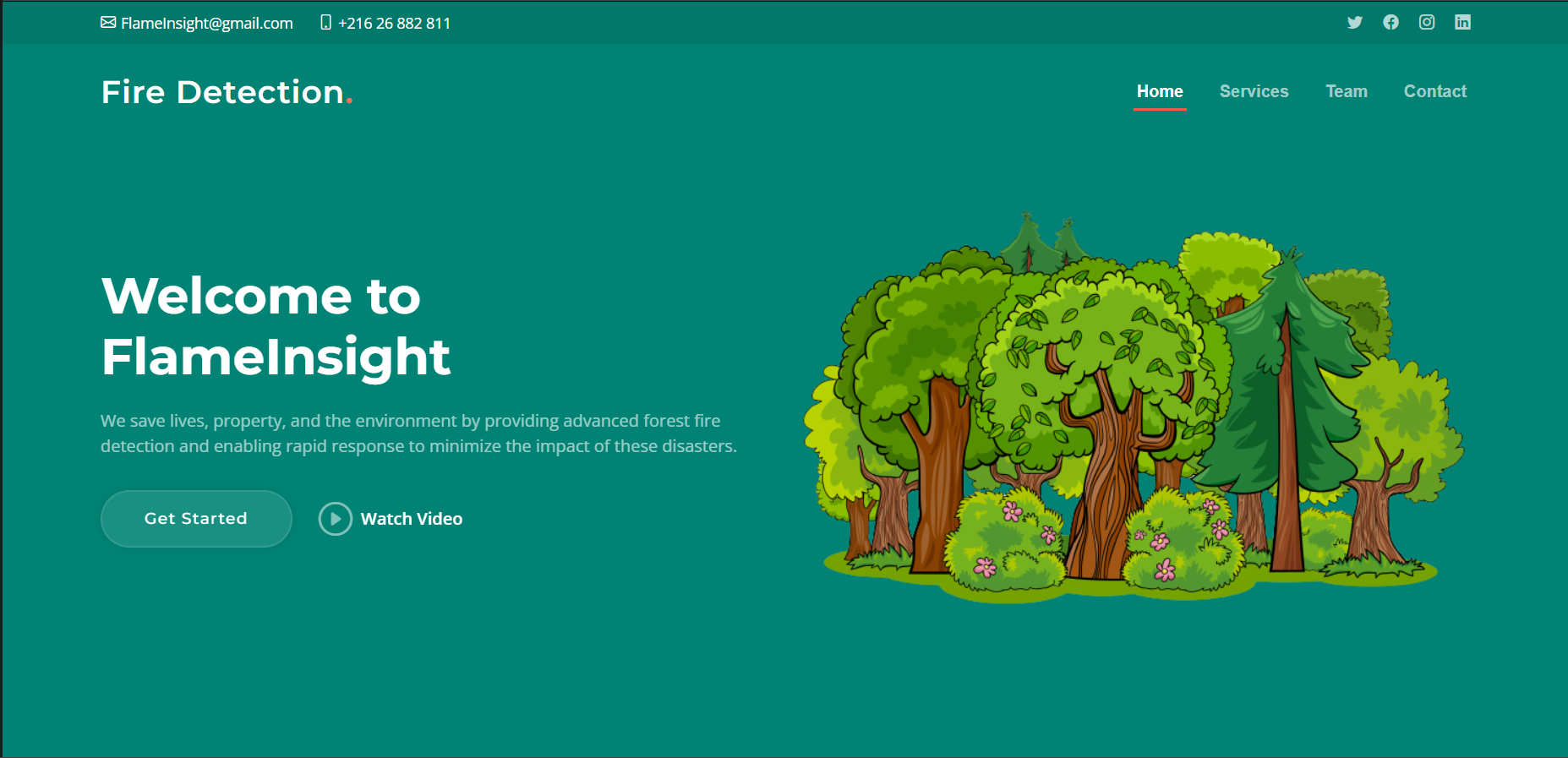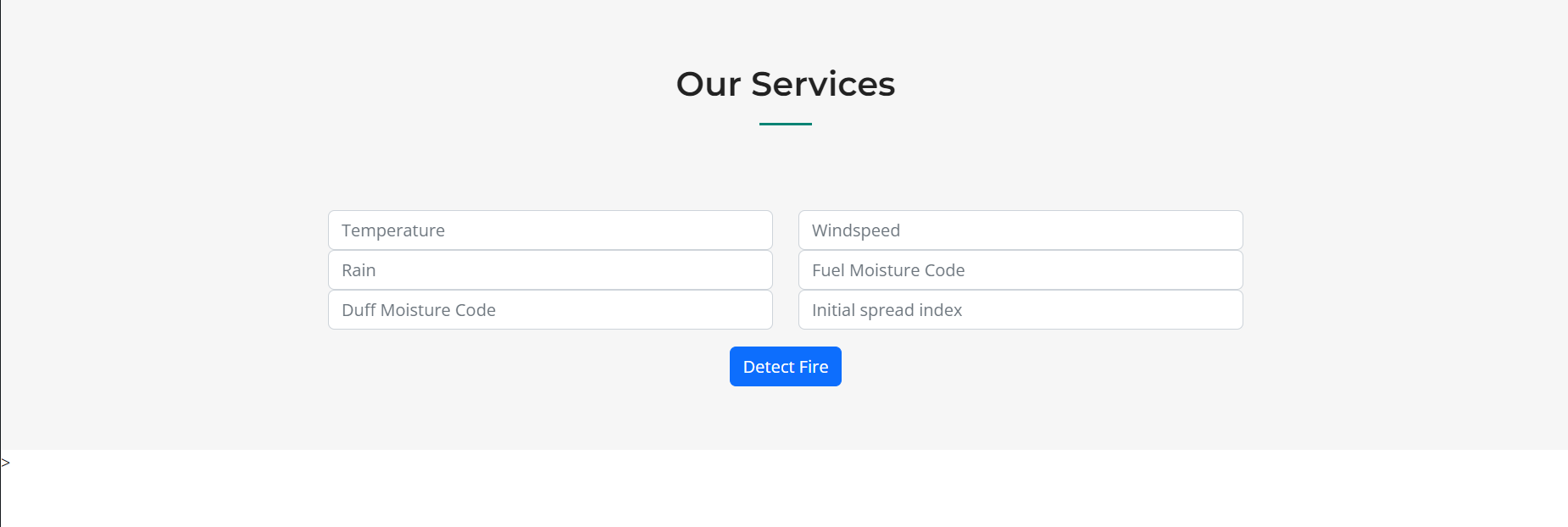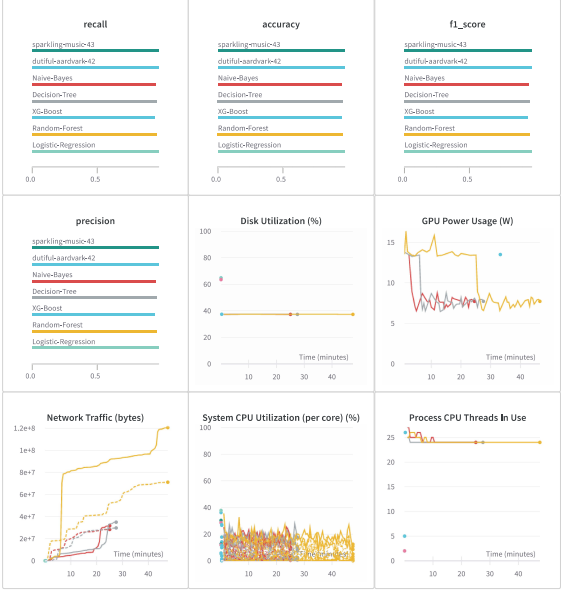This project is a Forest Fires Detection application that consists of a native web frontend and a backend built with FastAPI. The application is hosted on Azure and utilizes monitoring with W&B (Weights & Biases) and automation with GitHub Actions. The project includes two web apps, one for the frontend and one for the backend, which are connected to each other. The testing of the application is done using pytest. The following is an overview of the workflow to provide an understanding of the project structure and processes.
The Forest Fires Detection App offers a user-friendly interface that allows users to easily interact with the application. The frontend web interface provides a visually appealing and intuitive design, enabling users to input relevant information and receive real-time updates on forest fire detection. Users can input data to assess the risk of forest fires.


In a real-world scenario, the Forest Fires Detection App can be enhanced by integrating sensors deployed in the forest that periodically send information to the application. These sensors can be strategically placed to gather data on various environmental factors such as temperature, humidity, wind speed, and smoke density. The collected data from these sensors can then be transmitted to the application, providing real-time updates and a comprehensive understanding of the forest conditions.
The workflow for the Forest Fires Detection App includes several steps and jobs:

The "test" job is responsible for testing the application. It runs on an Ubuntu environment and performs the following steps:
Checks out the repository Sets up the Python environment Installs the dependencies listed in the requirements.txt file Installs Pytest and other necessary packages Runs the test cases using Pytest
The "build-and-push" job is triggered after the "test" job is completed successfully. It performs the following steps:
Checks out the repository Logs in to the Azure Container Registry (ACR) for the frontend Builds the Docker image for the frontend using the Dockerfile in the front directory Pushes the Docker image to the ACR backend
The "build-and-push-backend" job is triggered after the "test" job is completed successfully. It performs the following steps:
Checks out the repository Logs in to the Azure Container Registry (ACR) for the backend Builds the Docker image for the backend using the Dockerfile in the FastAPI_backend directory Pushes the Docker image to the ACR backend
The "deploy-to-webapp" job is triggered after both the "build-and-push" and "build-and-push-backend" jobs are completed successfully. It performs the following steps:
Checks out the repository Logs in to Azure Deploys the Docker image of the frontend to the Azure Web App specified by the WEBAPP_NAME Deploys the Docker image of the backend to the Azure Web App specified by the BACKEND_WEBAPP_NAME
The "training-metrics" job is triggered after the "deploy-to-webapp" job is completed successfully. It performs the following steps:
Checks out the repository Sets up the Python environment Installs the dependencies listed in the requirements.txt file Runs the training script, utilizing the W&B API key from secrets
REGISTRY_NAME: Name of the frontend Azure Container Registry (ACR)
REGISTRY_BACKEND_NAME: Name of the backend Azure Container Registry (ACR)
IMAGE_NAME: Name of the frontend Docker image
BACKEND_IMAGE_NAME: Name of the backend Docker image
WEBAPP_NAME: Name of the Azure Web App for the frontend
BACKEND_WEBAPP_NAME: Name of the Azure Web App for the backend
RESOURCE_GROUP: Azure resource group name
LOCATION: Azure region location
The necessary secrets, such as ACR_USERNAME, ACR_PASSWORD, AZURE_CREDENTIALS, AZURE_WEBAPP_PUBLISH_PROFILE, AZURE_BACKEND_WEBAPP_PUBLISH_PROFILE, and WB_API_KEY are required and should be set in the GitHub repository.
This project aims to detect forest fires and provides a complete workflow to ensure the application is thoroughly
